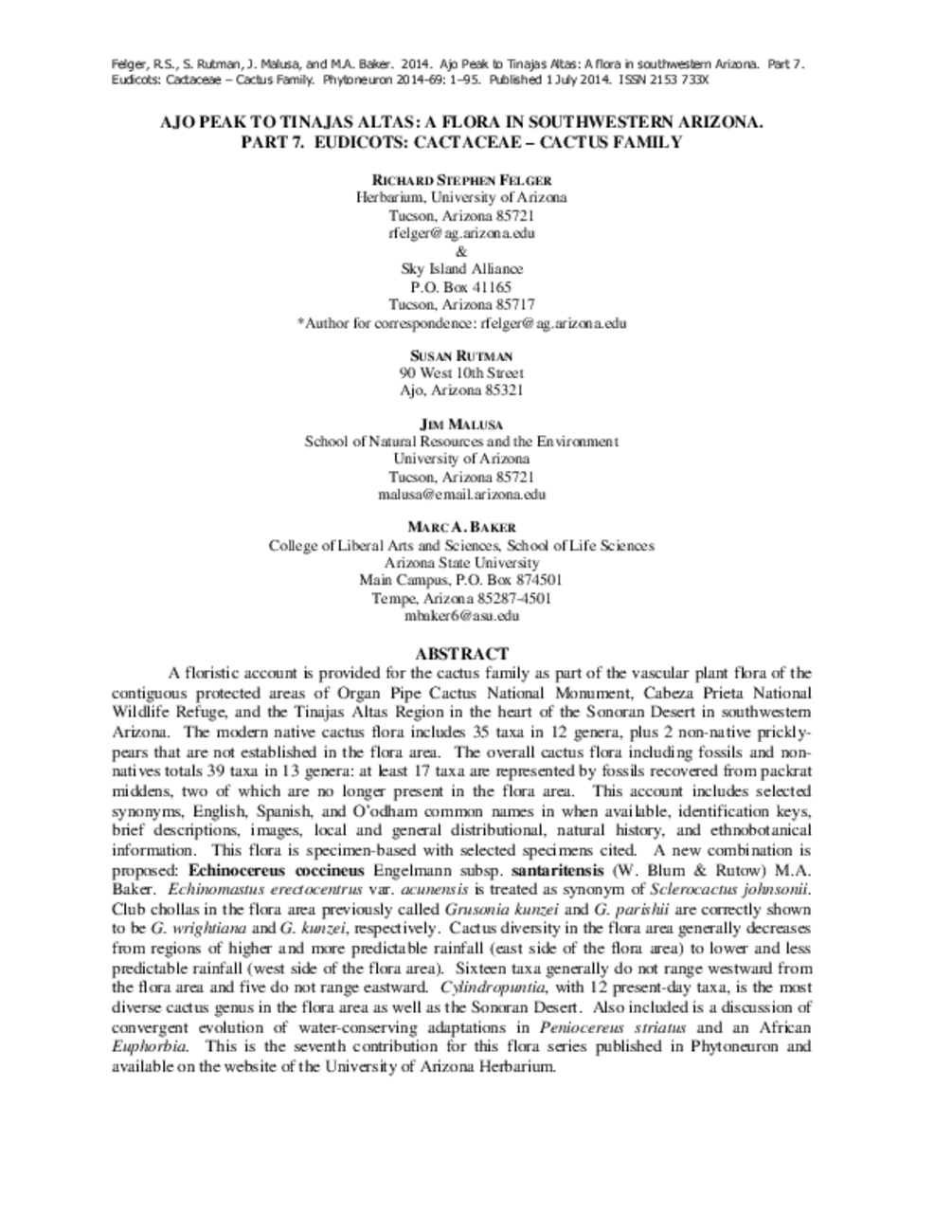Ajo Peak To Tinajas Altas: A Flora In Southwestern Arizona. Part 7. Eudicots: Cactaceae – Cactus Family
A floristic account is provided for the cactus family as part of the vascular plant flora of the contiguous protected areas of Organ Pipe Cactus National Monument, Cabeza Prieta National Wildlife Refuge, and the Tinajas Altas Region in the heart of the Sonoran Desert in southwestern Arizona. The modern native cactus flora includes 35 taxa in 12 genera, plus 2 non-native prickly- pears that are not established in the flora area. The overall cactus flora including fossils and non- natives totals 39 taxa in 13 genera: at least 17 taxa are represented by fossils recovered from packrat middens, two of which are no longer present in the flora area. This account includes selected synonyms, English, Spanish, and O’odham common names in when available, identification keys, brief descriptions, images, local and general distributional, natural history, and ethnobotanical information. This flora is specimen-based with selected specimens cited. A new combination is proposed: Echinocereus coccineus Engelmann subsp. santaritensis (W. Blum & Rutow) M.A. Baker. Echinomastus erectocentrus var. acunensis is treated as synonym of Sclerocactus johnsonii. Club chollas in the flora area previously called Grusonia kunzei and G. parishii are correctly shown to be G. wrightiana and G. kunzei, respectively. Cactus diversity in the flora area generally decreases from regions of higher and more predictable rainfall (east side of the flora area) to lower and less predictable rainfall (west side of the flora area). Sixteen taxa generally do not range westward from the flora area and five do not range eastward. Cylindropuntia, with 12 present-day taxa, is the most diverse cactus genus in the flora area as well as the Sonoran Desert. Also included is a discussion of convergent evolution of water-conserving adaptations in Peniocereus striatus and an African Euphorbia. This is the seventh contribution for this flora series published in Phytoneuron and available on the website of the University of Arizona Herbarium.

